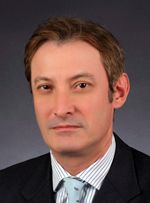Almost exactly two years ago in this column I predicted that Rodrigo Duterte would gain the Philippines presidency. His sharp-shooting style captured the same zeitgeist that propelled Donald Trump to the top job in America, and he correctly judged the desire of Filipinos for a break with the technocratic, low-key incumbency of Noynoy Aquino.
But I had my doubts about just how a Duterte presidency would affect the Philippines economy and the country’s perception in financial markets. In particular, those concerns centered on the possibility of Manila turning into an urban killing field if Duterte were to make good on his promise to solve the country’s hard drug abuse problem via the barrel of a gun.
Well, around 8,000 Filipinos are estimated to have perished as a result of his anti-drugs campaign, but the financial markets barely batted an eyelid. As I write this from Manila, it seems the aggressive anti-drugs programme has been wound down. No-one is talking about a campaign which put the Philippines on the global radar for the wrong reasons.
And after what appears to have been a U-turn in policy, the Philippines is basking in the limelight of economic success. Just last week Fitch upgraded the country’s long-term foreign currency-denominated debt rating one notch to BBB, which places it at the same level as Italy and a notch ahead of Indonesia. In Fitch’s opinion, growth is set to hit 6.8% in each of the next two years, one of the highest rates within the South East Asian region.
The agency referred to “strong and consistent macroeconomic performance… underpinned by sound policies that are supporting high and sustainable growth rates,” and alluded to the reality that Duterte’s war had failed to undermine investor confidence.
So I shall have to accept that I made the wrong call on the likely economic and capital markets impact of the president’s bloody war against drug users and dealers. The prisons may be overflowing with captured drug offenders and those who voluntarily turned themselves in when the campaign began in earnest last year, but it appears that the streets are figuratively paved with gold.
I HAVE BEEN struck during this visit by an aura of a country on the move. From the high-end shops and eateries in Bonifacio Global City, which give Tokyo or Singapore a run for their money in terms of pristine hipness, to the absence of smoking on the street, thanks to an aggressive zoning policy, there is a sense of revitalisation.
And whereas the traffic in Metro Manila might be its usual horrendous, choked-up self, there are bright spots. The Skyway which links the main international airport to the central business district is world-class – a sign of hope that the Philippines may be finally catching up with its richer neighbours in the infrastructure stakes. There are plans to build an underground metro system which might just stymie Manila’s chronic traffic problem for good.
Certainly the very special nature of the Philippines political and social system is an issue which Rodrigo Duterte understands and has played in a masterful way, along with the help of social media. It’s estimated that around 97% of Filipinos who have internet connectivity are on Facebook, and that platform has been used to bolster Duterte’s popularity with the “massa.”
MEANWHILE, THE ECONOMIC policies under his administration have proven to be spot-on, centred as they are on a massive infrastructure spend. The hope is that, as well as dealing with the traffic logjam in the metropolis, the logistics of moving goods around the country can be bumped up via the creation of new highways and an improved rail network.
A tax bill, awaiting debate and expected to pass, aims to boost government tax collection; weak government revenue due to a relatively paltry tax base versus the country’s sizeable population has always been the Philippines’ Achilles heel. The hope is that a new era can be ushered in which allows for Duterte’s ambitious infrastructure plans to be majority funded out of revenue rather than via increased government borrowing.
Of course there are potential caveats to all this. Fitch has warned of the possibility of economic overheating, and a few Filipinos I met last week described the ongoing economic surge as a bubble. .
Perhaps, given the country’s chequered recent history one could forgive the average Filipino for nurturing a “glass half empty” mindset. But I sense that it is all rather different this time, and that with prudent management, the takeoff which has long been promised is finally underway.

